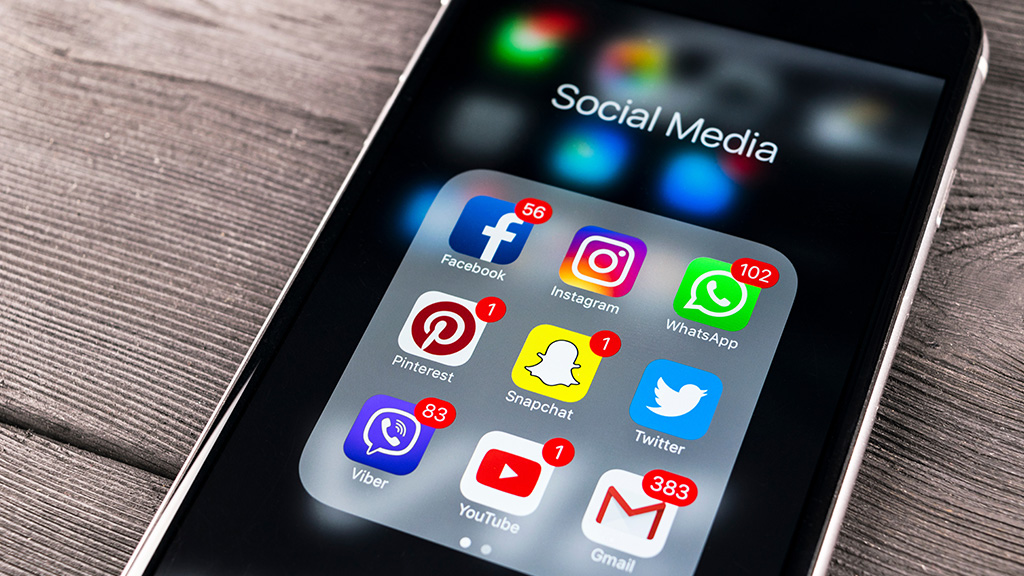
PHOTO CREDIT: ALEKSEI/STOCK.ADOBE.COM
As a young scholar who is currently a first-year student at the University of North Carolina (UNC-Chapel Hill), Keegan Lee vividly described her personal journey from being addicted to social media to rekindling her humanity as a teenager—by returning to more in-person interactions. Lee co-authored with Bilal Ghandour a book titled 60 Days of Disconnect: A Personal Perspective of How Social Media Affects Mental Health in 2022. They use storytelling, research, and introspection to help readers understand the psychology behind social media platforms.
She writes: “In the midst of the pandemic, I found myself constantly gravitating toward my phone. Humanity was already in a state of social isolation, and I turned to social media as a means of connection. I was spending more time engaging with bots online and had forgotten the importance of creating real, in-person, authentic relationships. I was comparing myself to the highlight reels and superficial realities of social media and associating my worth with the number of likes, comments, and followers. It was an instant distraction in moments where I could have been productive focusing on academics or the self-goals I had pictured.
“My obsession with social media was universal. Tech addiction is affecting all generations on a global scale. I decided to delete social media for 60 days to experience life without something so prevalent among my generation and use my time in more healthy and productive ways rather than constantly being consumed by a screen.”
Youth Mental Health Crisis
During the COVID-19 pandemic, more than a third (37%) of high school students reported experiencing poor mental health and 44% reported they persistently felt sad or hopeless during the past year, according to the Centers for Disease Control and Prevention. The National Alliance on Mental Illness (NAMI) reported in 2022 that nearly two-thirds (64%) of U.S. teenagers ages 12 to 17 feel that the world is more stressful now than when their parents were their age. Only 48% talk regularly with their parents about their mental health and only 22% talk regularly with friends.
The youth mental health crisis seems juxtaposed with the prevalence of artificial intelligence (AI) technology in human life. Nearly all American teenagers ages 13 to 17 have access to a smartphone, according to a Pew Research Center report in 2022. More than half the teenagers say it would be difficult for them to give up social media.
AI and Hierarchy of Needs
With advancements in technology, AI—the simulation of human intelligence processes by machines, particularly computer systems—has been integrated into social media platforms to facilitate various tasks such as content moderation, personalized advertising, and chatbots. Social media algorithms are particularly unique in that they fulfill a motivational theory in psychology—Abraham Maslow's hierarchy of needs. The theory comprises a five-tier model of human needs, often depicted as hierarchical levels within a pyramid. Lower-level basic needs like food, water, and safety must be met first before higher needs can be fulfilled.
In the digital world, when teenagers (for example) are socially “hungry,” they can turn to social media to “feed” them. Designed to attract users, social media platforms provide a constant alert for visual or auditory cues to increase users’ likelihood of going on social media (e.g., phone “buzzes” or lights up for notifications).
To meet the second basic level of human needs (i.e., safety), social media platforms grant users three biological wishes: “You will always be heard, you are always in control, and you are never alone.” To a certain extent, social media algorithms can create a sense of “safety” or familiarity through a particular community, online group chats, or comments, even though users can be strangers.
One way in which social media algorithms pretend to fulfill human needs of self-esteem or to provide a sense of accomplishment is through the well-known likes, comments, and followers. When we humans are flooded with these quantitative factors, we feel a sense of productivity—like we have done something “right.” Our self-esteem needs may seem to be fulfilled when we receive notifications that gratify our instinctive needs of being socially accepted. However, humans are not hard-wired to communicate with an absence of facial cues, body language, eye contact, and physical touch.
Developing In-Person Interaction Skills
Researchers find that prolonged use of social networking sites for nonacademic purposes can distract students from their academic work; adversely affect their academic performance, social interactions, and sleep duration; and lead to a sedentary lifestyle and physical inactivity. As Lee described, obsession with social media can render youth vulnerable to mental health problems.
The 2022 NAMI survey shows that among teenagers who have sought information about mental health, 94% do not use social media for that information. This means that most teenagers still turn to parents, friends, teachers, and other adults at their schools for help. Initiatives such as the Log Off Movement and 60 Days Disconnect with Social Media may be opportunities for students to restore and redevelop their in-person interaction skills. School leaders may provide more guidance to help students in their use of social media and foster a culture in which schools and communities work together to preserve the value of in-person connection and communication.
Keegan Lee (keeganl444@gmail.com) is studying at the University of North Carolina at Chapel Hill as a Copland Scholar and member of Honors Carolina. Jinghong Cai (jcai@nsba.org) is the senior research analyst at NSBA’s Center for Public Education.

Share this content